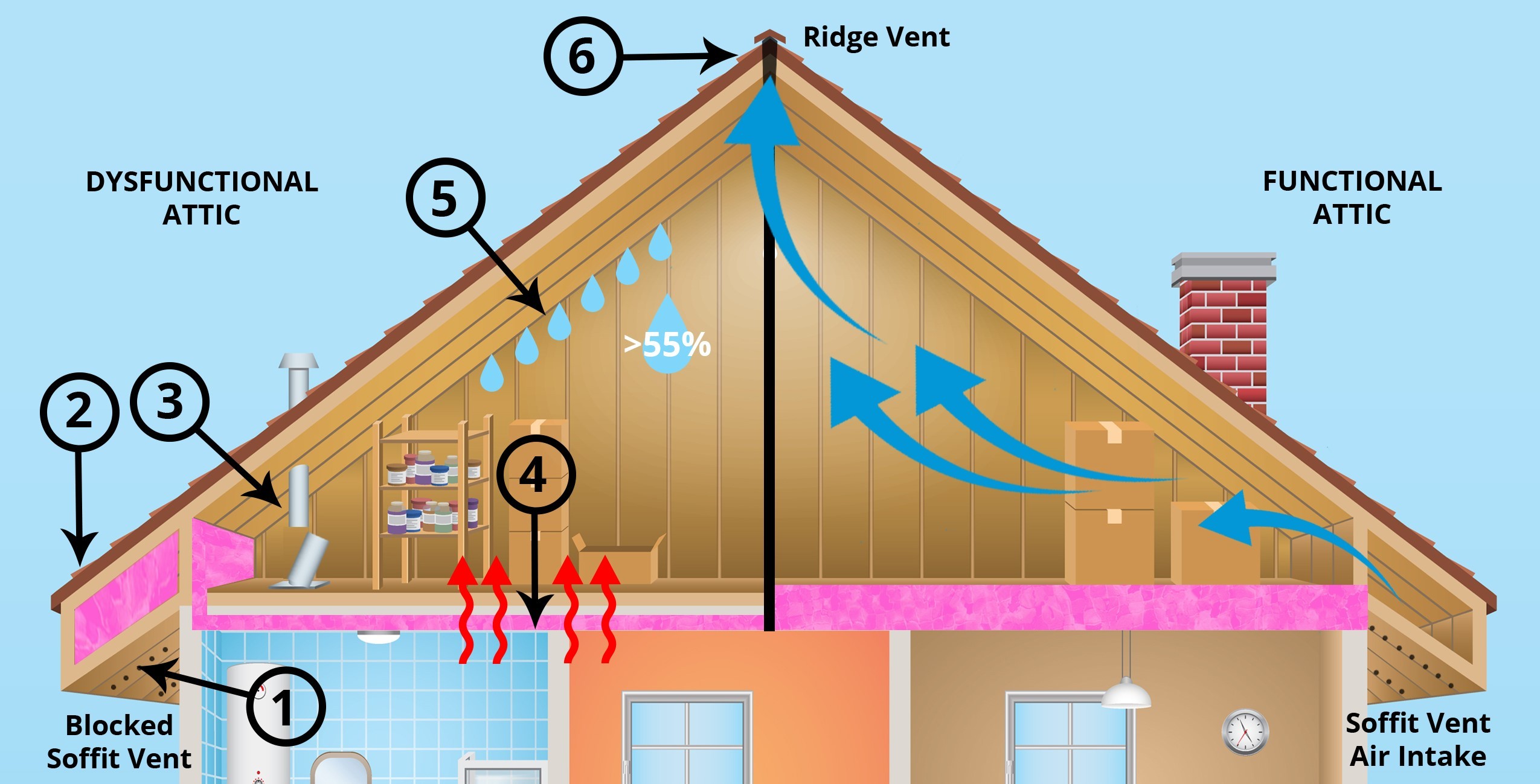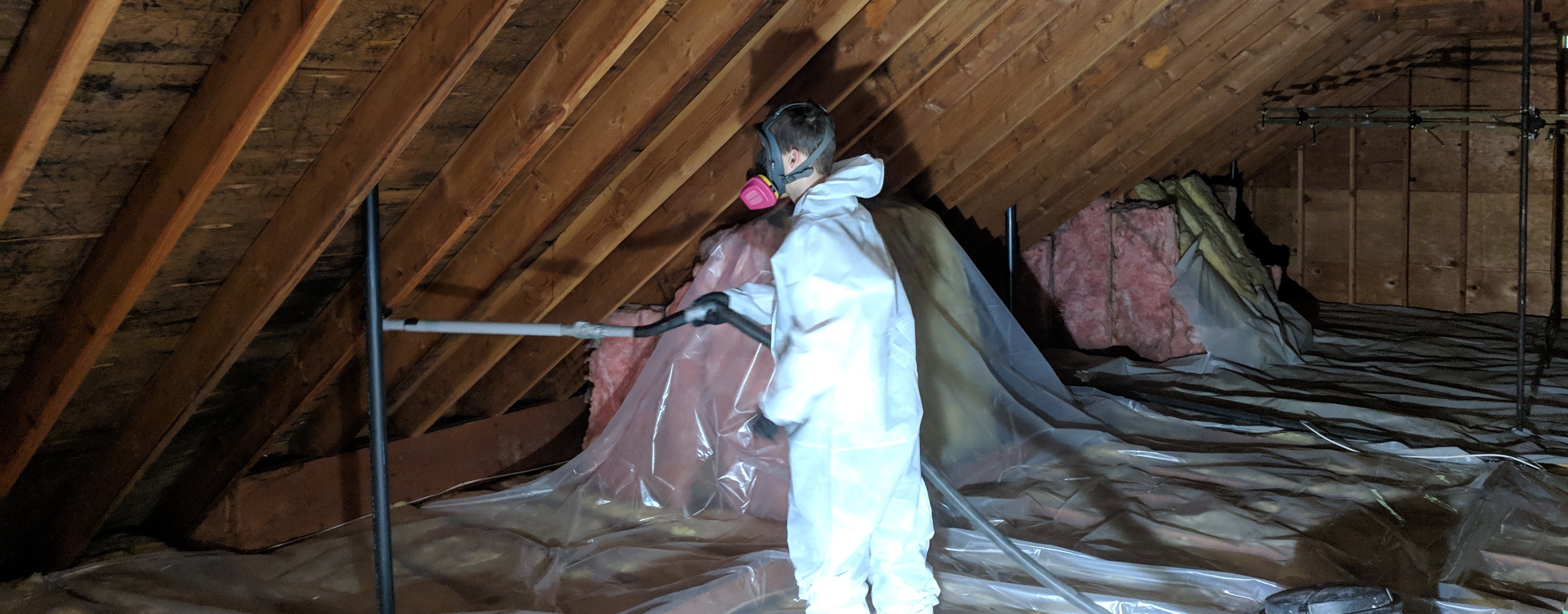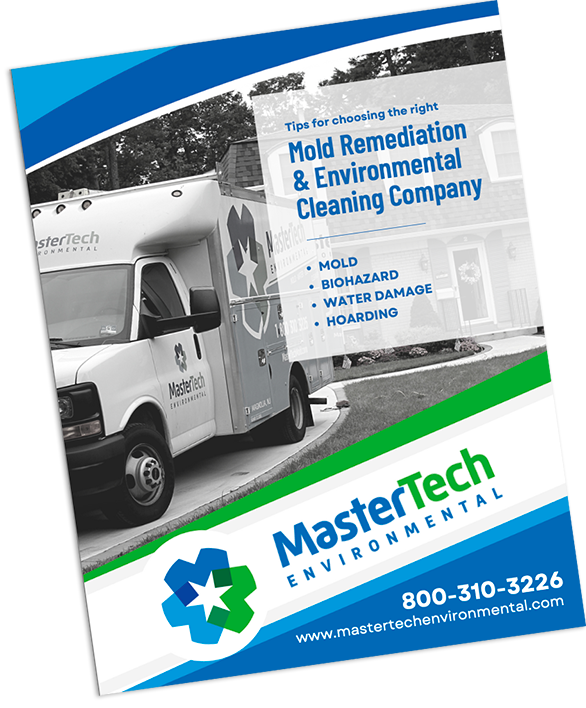
Attic mold is a common issue for South Jersey property owners. Dysfunctional attics can be the ideal conditions for fungal growth. A functional attic in South Jersey means no roof leaks, adequate attic insulation, humidity levels below 50%, sufficient attic ventilation and HVAC & plumbing vents that vent directly to the exterior. Attics missing any of these elements could be considered dysfunctional and could be susceptible to moisture problems and mold growth. Keep reading to learn more about dysfunctional attics, how they contribute to mold, and what you can do to make it a functional attic.
What Causes Attic Mold in South Jersey Buildings?
Attics are one of the most common places for mold development. New Jersey attics can be very vulnerable to moisture buildup from excessive heat, high humidity, roof leaks, and lack of ventilation. In the presence of water, it only takes 24-48 hours for mold spores to germinate and spread to be a major contamination. Some simple attic mold prevention tactics will go a long way to help you avoid a costly mold remediation in the future.
- Blocked soffit vents causes attic mold growth. If the soffit vents are obstructed by excess insulation or attic debris, air cannot properly circulate in and out of the attic. Some attics are missing soffit vents all together. Inadequate ventilation and air circulation forces warm, moist air to get trapped in the attic. This allows moisture buildup over time that will cause mold growth over time and additional problems.
- Unaddressed roof leaks will cause mold growth and water damage. The most obvious water issue that cause mold is a roof leak. Water intrusion at the roof needs to be addressed in a timely manner. Unaddressed moisture buildup from a roof leak can lead to mold develop and water damage.
- Mold can develop as a result of moisture buildup from faulty HVAC or plumbing vents. Attic mod often occurs when bathroom vents and HVAC or plumbing vents are being directed into the attic without proper ventilation or redirection to the exterior. If vents are dumping unwanted air into the attic, this can cause moisture buildup and allow for mold development.
- Insufficient attic insulation can cause mold growth and other underlying issues. The stack effect in buildings means that warm, moisture air from the lower levels rise up through the building. Inadequate insulation in the attic can allow air from the living spaces to radiate into the attic. If the attic is also poorly ventilated, then this warm air just gets trapped with nowhere to go. This can result in condensation buildup and mold growth over time.
- Attic condensation & high humidity caused attic mold. Condensation and humidity will collect in your attic if there is limited air circulation. Moisture buildup over time will lead to mold and wood rot.
- Mold can develop if there isn’t an attic ridge vent. In the ideal attic, air circulates into the attic at the soffit intake and exists at the peak of the roof by way of the ridge vent. This allows the ideal air circulation within the space. If there isn’t a ridge vent in the attic, there is nowhere for the air to exhaust out, thus trapping moisture.

How to Prevent Attic Mold in South Jersey Buildings?
In order to prevent attic mold, the proper steps need to be taken. The key to mold prevention is moisture control. Aside from the obvious roof leak, moisture buildup in the attic can easily go unnoticed. As hot air rises in the building structure via the stack effect, the moist air travels into the attic. Ideally, the attic is properly ventilated with a strategic combination of soffit vents, gable vents and ridge vents. This will allow the moisture to circulate out of the attic. Adequate air circulation in and out of the attic ensures that the warm, moisture air can escape the attic, leaving it dry and mold-free.
General Attic Mold Prevention & Moisture Control Guidelines:
- Ensure there is adequate soffit ventilation. If you are worried about attic ventilation, you should consult a licensed roofing contractor who will be able to provide the adequate attic ventilation needed to ensure sufficient air circulation and prevent moisture buildup. One of the most common mistakes is over insulation that blocks the soffit vents. The soffit vents should be clear of insulation or other debris that can obstruct air flow.
- Assess for roof leaks and signs of roof damage. South Jersey property owners should conduct routine roof assessments and maintenance to check for leaks, signs of damage and other issues. You should conduct additional checks following periods of heavy rain. It is important to address roof-related issues in a timely manner.
- All vents should be directed to the exterior. Properly installed bathroom, HVAC and plumbing vents should empty directly to the outside. It is important to make sure that all HVAC & plumbing vents are not venting directly into the attic.
- Properly insulate the attic. Attic insulation is a Goldie Locks Tale. Too little insulation will allow air from the living space to radiate into the attic can cause moisture buildup. Too much insulation could obstruct vents and restrict air flow. South Jersey homeowners should consult a professionally licensed contractor to ensure proper insulation of the attic space.
- Adequate attic air circulation prevents condensation & reduces humidity. Are we starting to sound like a broken record yet? We just cannot stress enough the importance of attic air circulation in South Jersey buildings – consult with a local professional in South Jersey as needed to ensure your attic is properly ventilated.
- A properly installed ridge vent ensure adequate air circulation. In a functional attic, air enters the attic by way of soffit vent intake. The air then exhausts out the ridge vent. A ridge vent properly installed at the peak of the roof, coupled with soffits vents and gable vents, ensures the adequate air circulation needed to maintain a dry and mold-free attic in South Jersey. Ridge vents should be clear of insulation or other debris that can obstruct air flow.
Local Mold Removal Services in New Jersey
Whether it is attic mold caused by high humidity, fungal growth caused by condensation or water damage caused by a roof leak – mold and water related issues in the attic need to be assess by a professional. Local mold remediation companies in South Jersey are professionally trained in handling fungal growth in attics. Mold requires active removal under containment, in accordance to specific cleaning protocols and safety regulations. A cleanup company, like Mastertech Environmental, will have years of experience dealing with mold related issues and are fully equipped to provide the thorough, safe and effective remediation services needed to restore clean and safe conditions.
Got Attic Mold? Let Mastertech help. Call our local South Jersey office today – 609-948-8844.


